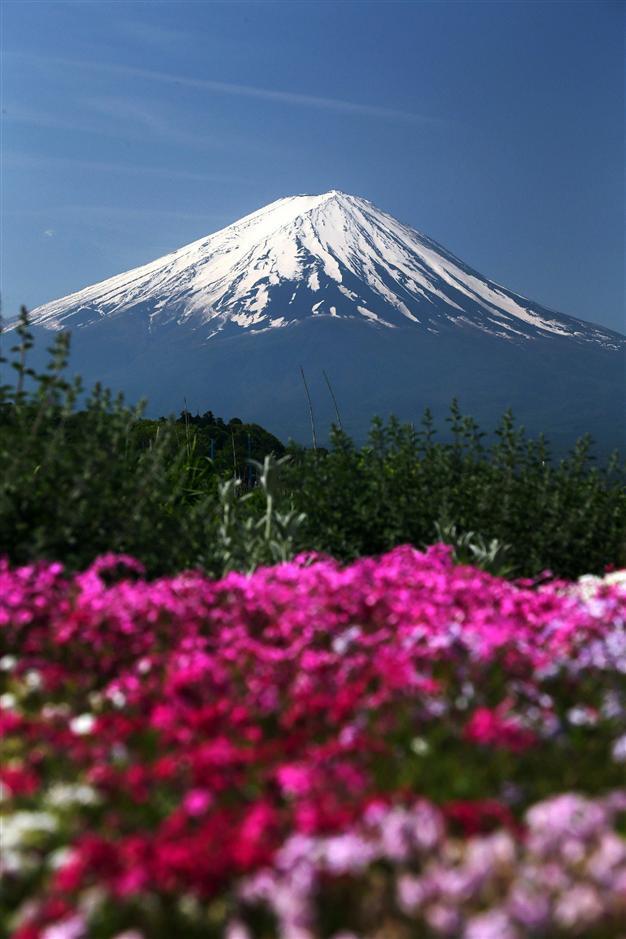Mount Fuji granted World Heritage status by UNESCO
PHNOM PENH, Cambodia - Agence France-Presse

This picture taken on May 13, 2013 shows snow capped Mt. Fuji, seen from Kawaguchiko town in Yamanashi prefecture. AFP photo
Japan's Mount Fuji, known for its perfectly cone-shaped volcano, was on June 22 granted World Heritage status, UNESCO said.
Fujisan, the highest mountain in Japan at 3,776 metres (12,460 feet), is one of the country's most recognisable sights. The snow-capped peak "has inspired artists and poets and been the object of pilgrimage for centuries", UNESCO said.
The United Nations Educational, Scientific and Cultural Organization committee, currently holding its 37th annual session in Phnom Penh, classified the site as a "cultural" heritage site, rather than a "natural" heritage site.
"The awe that Fujisan's majestic form and intermittent volcanic activity has inspired was transformed into religious practices that linked Shintoism and Buddhism, people and nature," documents prepared ahead of the meeting said.
Mount Fuji "inspired artists in the early 19th century to produce images that transcended cultures, allowed the mountain to be known around the world, and had a profound influence on the development of Western art." Fujisan, which is located some 100 kilometres southwest of the capital Tokyo, last erupted around 300 years ago. Images of its peak adorn tourism literature published at home and abroad.
UNESCO documents singled out a series of wood block prints by Katsushika Hokusai, the Thirty-Six Views of Mount Fuji, saying they "had a profound impact on Western art in the 19th century and allowed the form of Fujisan to become widely known as the symbol of 'Oriental' Japan".
The UNESCO-listed site includes the top zone of the mountain and sites spread across the slopes and at the base of the mountain including shrines, lodging houses and groups of "revered natural phenomena" including springs, a waterfall, and lava tree moulds.
"Together (they) form an exceptional testimony to the religious veneration of Fujisan, and encompass enough of its majestic form to reflect the way its beauty as depicted by artists had such a profound influence on the development of Western art," UNESCO said.
Mount Fuji is the seventeenth Japanese site to be inscribed by UNESCO.
Sicily's Mount Etna joins FujiBesides the historical monuments of ancient Kyoto, there is also the Peace Memorial in Hiroshima, the shrines and temples of Nikko city, the monument of the ancient capital of Nara, and the famous Shinto shrine of Itsukushima.
UNESCO is currently holding a 10-day annual meeting in Phnom Penh during which it is considering adding 31 sites to the World Heritage List.
On June 22, UNESCO also inscribed the landscapes of terraced rice fields of Honghe Hani, south of the Chinese province of Yunnan, which reflect "in an exceptional way a specific interaction with the environment mediated by integrated farming and water management systems." "Carved out of dense forest over the past 1,300 years by Hani people... the irrigated terraces support paddy fields overlooking narrow valleys," UNESCO said in documents prepared ahead of the inscription.
"In some places, you can see up to 3,000 suspended terraces on the slopes" of Ailao mountains, it added.
On June 21, Italy's Mount Etna, the Hill Forts of Rajasthan in India and the Namib Sand Sea were among the natural wonders and cultural jewels to be granted World Heritage status.
